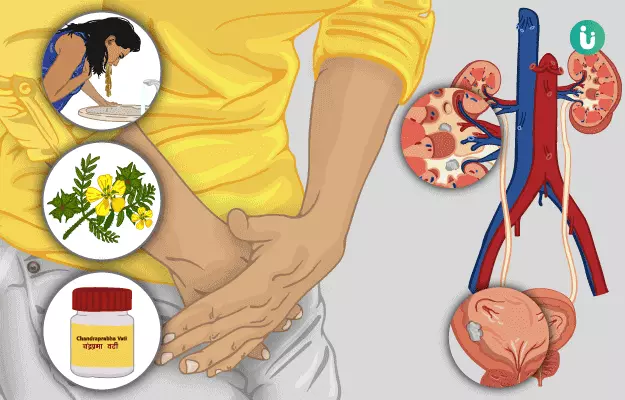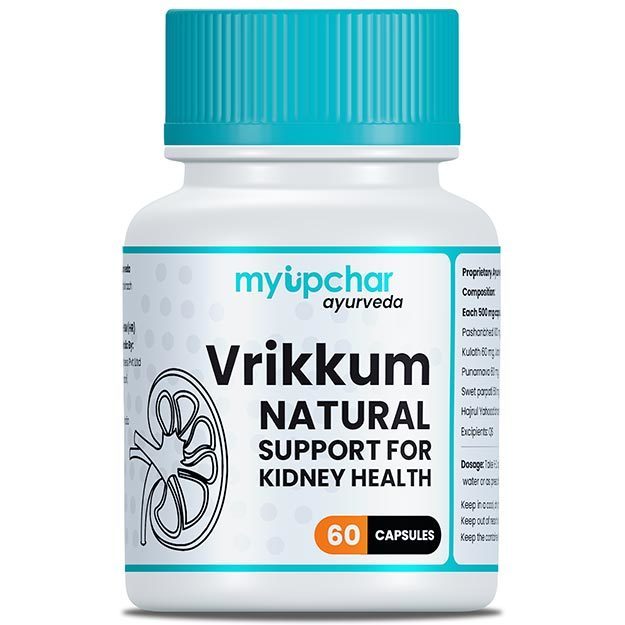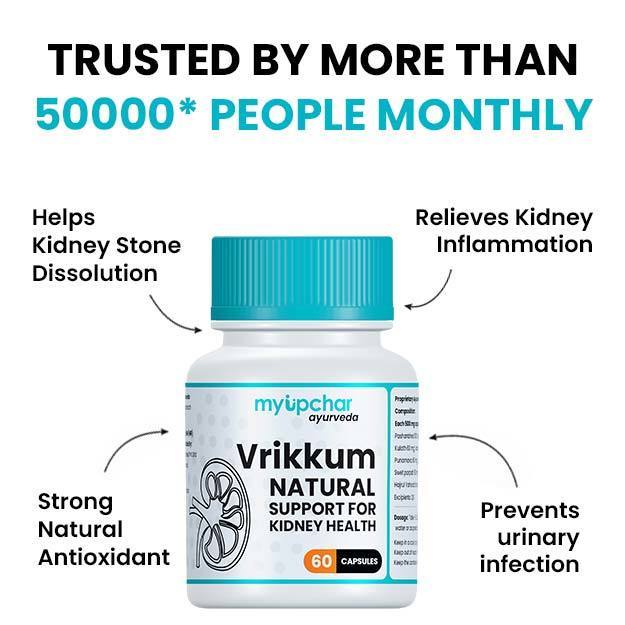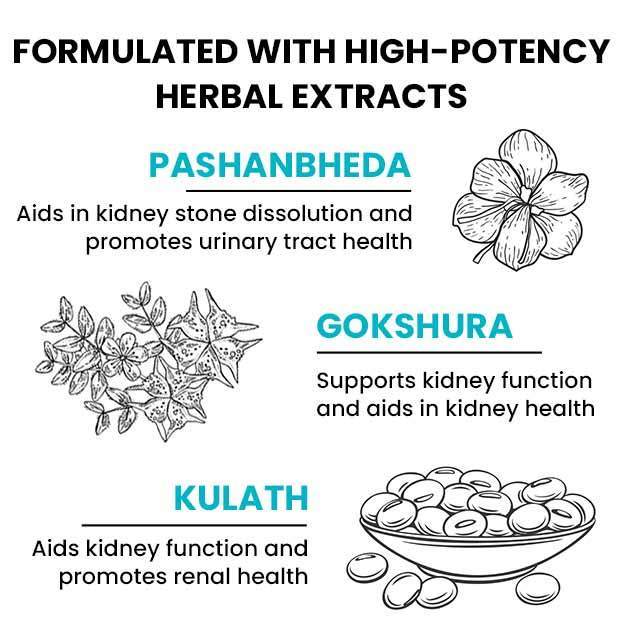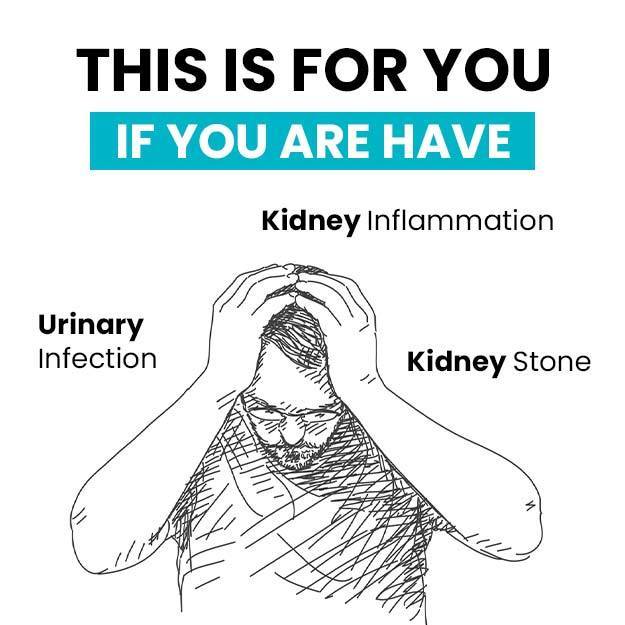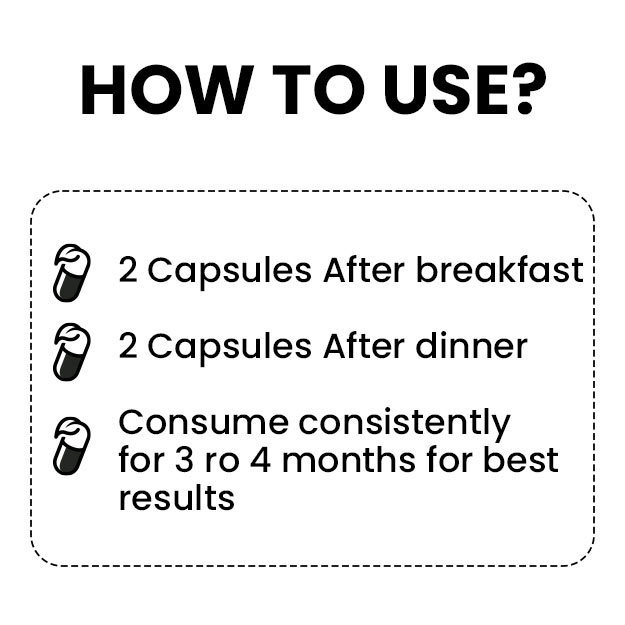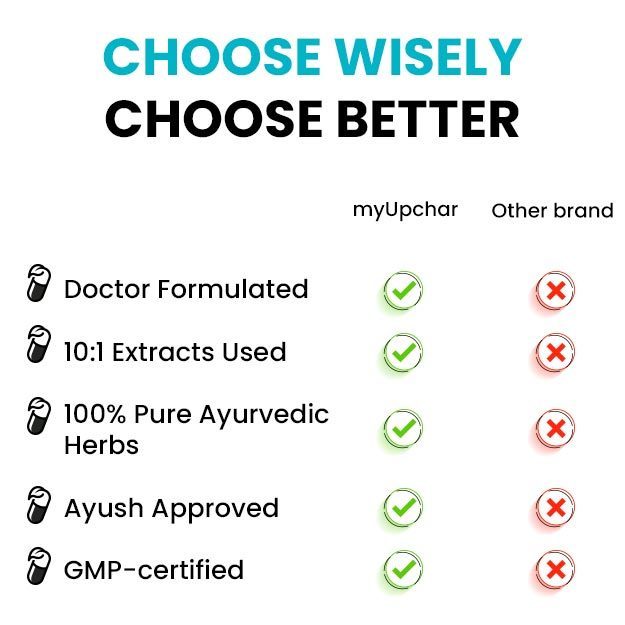Kidney stones are also known as ashmari in Ayurveda. They are formed when the vitiated kapha dosha reaches the urinary system and gets dried due to vata. These stones get lodged in the kidneys and when they are displaced, intense pain in the pelvic region, painful urination and difficulty in urination is experienced. The pain intensifies due to movement. Ayurveda classifies ashmari into four basic types depending on the predominance of the particular dosha. The disease can be very painful and may need immediate treatment. Ashmari treatment includes shamana (pacification), shodhana (purification) and sometimes shastra karma, which is surgical removal of the kidney stone. While pacification includes the use of various drugs to dissolve the stone, increase urine output and alleviate pain; shodhana includes panchakarma (five therapies) like vamana (medical emesis), basti (enema) and virechana karma (purgation therapy) to remove the doshas out of the body. These are done only after the preparatory procedures of snehana (oleation) and swedana (sudation).
Commonly used herbs for ashmari are gokshura (small caltrops), punarnava (red hogweed), pashanbheda (stone breaker). Formulations like chandraprabha vati, gokshura guggulu and yava kshara are prescribed to treat kidney stones. The condition is treatable, and recurrence can be completely avoided with proper diet and lifestyle changes.
- Ayurvedic view of kidney stones
- Ayurvedic treatment for kidney stones
- Ayurvedic herbs and medicines for kidney stones
- Dietary and lifestyle changes for Kidney stone patients as per ayurveda
- How effective are ayurvedic medicines and treatments for kidney stones
- Side effects and risks of ayurvedic medicine and treatments for kidney stones
- Takeaway
Ayurvedic view of kidney stones
Kidney stones or renal calculus is a common problem referred to as ashmari in Ayurveda. This disease originates in the colon and reaches kidneys. In this condition, kidneys get enlarged and there is an increase in urea and uric acid.
According to Ayurveda, kidney stones are formed due to accumulation and drying up of the vitiated kapha dosha in the urinary system. Stones generally go unnoticed when they are lodged in kidneys. However, once dislodged, they enter the narrow urinary tract and produce unbearable pain. The most commonly seen stones are those of calcium oxalate and calcium phosphate. Pain caused due to kidney stones is very intense which increases with movements such as jumping, walking or climbing stairs. Such people also experienced pain during urination and their urine is usually cloudy. Ashmari can originate due to the predominance of any of the three doshas or sometimes due to the accumulation of shukra (semen or prostatic secretions) in the urinary tract. This is known as shukra ashmari. Depending on the cause of its occurrence, kidney stones are classified as:
- Vata ashmari: Dusty-coloured, hard, irregular stones are formed, and tremendous pain is experienced in the umbilical region, mainly while urinating.
- Pitta ashmari: Colour of the stones is red, yellowish, blackish and resembles the colour of honey. Urination is accompanied by a burning sensation, inflammation of the urinary tract and a warm feeling over the bladder.
- Shleshma ashmari: White-coloured, big stones are formed, and dysuria, heaviness, and cold sensation over the bladder are experienced.
- Shukra ashmari: Suppression of ejaculation during sexual act leads to accumulation of semen and formation of stone, resulting in intense pain and swelling in the scrotum.
The treatment aims at shamana and shodhana, in which removal of doshas is done by vamana, basti and virechana karma. It also includes adoption of a healthy lifestyle and a change in dietary habits. In some cases, removal of the stone by shastra karma is suggested.
Ayurvedic treatment for kidney stones
- Snehana
- Snehana for kidney stones is done as pre-panchakarma, a preparatory treatment given prior to actual panchakarma therapies.
- It involves massaging the whole body with lukewarm sesame oil and mustard oil for 15-35 minutes.
- Snehana helps in the lubrication of dry skin, controls the vitiated vata dosha, and helps to expel the exudates during sudation, which follows this treatment.
- After this treatment, it is better to avoid speaking loudly, doing excess physical activity and exposure to cold or hot weather.
- Swedana
- This treatment is also a preparatory treatment for the rest of the panchakarma to be performed later.
- It is done to remove vata and kapha dosha from the body.
- After proper snehana, swedana is carried out typically in a wooden chamber where decoctions of herbs are introduced with steam for 30-45 minutes. It induces perspiration, cleanses microchannels, liquefies toxins and expels them out with sweat.
- It is contraindicated in those with dry skin conditions, pregnant women and in those who are dehydrated or thirsty.
- It may cause vertigo, burning of the skin and should be done in the presence of a qualified Ayurvedic practitioner.
- Vamana
- It is one of the main karmas in panchakarma therapy. It involves the removal of doshas from stomach through the mouth by inducing vomiting.
- Commonly used herbs for vamana are powder seeds of indigo berry, powder of calamus, rock salt and honey.
- The preparation is made into a paste and given with lukewarm water or milk to induce emesis.
- After the treatment, you may be advised to avoid speaking loudly, overeating and doing stressful physical activity.
- Vamana is not well tolerated by every person and is contraindicated in pregnant women and patients with cardiac complications or hypertension. It should not be given in elderly patients and small children.
- Virechana
- Virechana karma is advised for relieving constipation and accumulated toxins from the body, which is an important aim in the treatment of kidney stones.
- Internal oleation is done by giving hot soup or fatty material before the virechana karma.
- Virechana karma is done at least 2 hours after sunrise, and the dose and type of purgative are decided depending on the patient’s condition.
- Purgatives like ghrita (clarified butter), cow’s milk, decoction of triphala (a combination of amalaki [Indian gooseberry], vibhitaki [belleric myrobalan] haritaki [chebulic myrobalan]) and castor oil is used commonly. Through this procedure, doshas will be thrown out of the body in the sequence of urine, stool, pitta, kapha and vata dosha.
- Virechana can cause weakness and drowsiness and sometimes bleeding through the anus. It is not recommended if you have poor digestion, fever, bleeding disorders or ulcers.
- Regular monitoring is required, and you may be put on dietary restrictions after virechana karma.
- Basti
- The first step in the treatment of kidney stones is avoiding constipation. If you are not able to tolerate purgation, then basti is the choice of panchakarma to cure and avoid further constipation.
- Basti can either be a decoction-based enema or an oil-based enema.
- An enema of castor oil is mild and soothing and helps to remove the doshas from colon where the problem initiates.
- Saindhavadi taila nirooha basti, which is a decoction-based enema prepared in sesame oil and having rock salt as its main ingredient is used. Vrushadi asthapana basti, another decoction-based enema, is also used for treating kidney stones. This treatment mainly aims at reducing the filtration load on kidneys.
- Excess physical and mental exertion should be avoided after basti and food should not be consumed for one hour after this treatment.
- It is contraindicated during pregnancy, menstruation, anal inflammation and diarrhoea.
- Shastra karma
- After the removal of doshas, surgical removal of stone may be advised in some cases.
- The stone is made to move down till the bladder and then an incision the size of the stone is made.
- The stone is removed with an agravaktra instrument – a small-tipped forceps, like mosquito forceps.
- Bladder is irrigated with a herbal decoction.
- A paste of lodhra (lodh tree), madhuka (honey tree), manjishta (Indian madder), and prapaundrika (white Egyptian lotus) is applied to the wound after washing it.
- Basti, oral medications and diuretics are given after the surgery.
Ayurvedic herbs and medicines for kidney stones
Ayurvedic Herbs for Kidney Stone
- Gokshura
- Fruits of gokshura are most widely used in the treatment of kidney stones due to their diuretic, lithotriptic (stone destroying) and analgesic (pain relieving) properties.
- It is considered to be the best herb to flush toxins from the body and offers relief in painful urination, blood in the urine and kidney stones.
- It is mainly used in the form of a churna (powder) and decoction.
- Gokshura churna may be given with warm water. For vata ashmari type of kidney stone, the decoction of the fruit is used.
- Punarnava
- The entire herb and sometimes roots of punarnava are used in the treatment of kidney stones.
- This herb has diuretic properties and is given alone or in combination with gokshura.
- Punarnava is used as a decoction, infusion, ghrita or paste made in sugar or honey.
- It is used mostly in pitta ashmari and increases urinary frequency, thereby throwing toxins out of the body.
- Pashanbheda
- Pashanbheda is a golden herb found in the Himalayas, and its rhizomes are used in the treatment of kidney stone.
- The rhizomes have a lithotriptic action which dissolves the uric acid kidney stones and gravel. It also has diuretic properties and thus helps in flushing out stones from body through urine.
- A decoction of the rhizomes of pashanbheda is effective in kidney stone treatment. Its churna can also be given with water to dissolve kidney stones.
- Kulattha
- The seeds of kulattha (horse gram) are used to treat kidney stones.
- They are mainly taken in decoction form and have a diuretic action.
- Kulattha should also be included as a cereal in regular diet if you are prone to kidney stones.
- Kulattha seeds have lithotriptic properties and dissolve calcium oxalate crystals, thereby flushing out stones from the urinary tract.
Ayurvedic Medicines for Kidney Stone
- Chandraprabha vati
- This is a tablet formulation containing 71 different herbs and minerals.
- The main ingredients are chandraprabha (camphor), vacha (calamus), vidanga (false black pepper), eranda (castor), shilajitu (asphaltum), guggulu (Indian bdellium tree). However, this formulation contains many more ingredients.
- The tablets are taken with water after meals.
- This preparation offers relief from pain and burning micturition.
- Chandraprabha vati can be used safely in children and adults.
Urjas Shilajit by myUpchar Ayurveda, supports kidney health, potentially helping prevent kidney stones. Its natural properties promote overall kidney function. Order Shilajit Capsules and Shilajit Resin now and get rid of kidney stones.
- Yava kshara
- Yava kshara consists of an alkaline preparation of barley.
- It is used in the alkali treatment of ashmari and is available as a churna.
- This formulation contains a combination of potassium chloride, potassium sulphate, potassium bicarbonate and potassium carbonate.
- These are urinary alkalizers that disintegrate the kidney stone.
- The preparation shows significant relief from umbilical pain and dysuria. Tenderness in the renal area is also relieved by this medicine.
- If taken in excess amounts, it can result in alkalosis and vomiting.
- Gokshuradi guggulu
- It is a combination of gokshura, guggulu, triphala, trikatu (three acrids) and mustaka (nut grass).
- Gokshura has diuretic and lithotriptic properties, and guggulu corrects vitiated vata and relieves pain and inflammation.
- The preparation can be safely given to children.
- It is given as a tablet with water before meals.
- Varuna mulatwak kashaya
- It is a decoction of varuna (three-leaved cape) and shigrumula (moringa).
- Varuna is very effective against kidney stones as it has lithotriptic activity. Shigrumula also has diuretic and lithotriptic properties.
- The decoction is given with water and relieves pain in dysuria along with breaking down kidney stones.
Dietary and lifestyle changes for Kidney stone patients as per ayurveda
Do’s
- Drink plenty of water to cleanse the urinary system.
- Consume old rice, barley, green gram and kulattha.
- Eat fruits and vegetables like kushmanda (wax gourd) and lemon.
- Include ginger, hingu (asafoetida) and drumstick in the diet.
- Go for panchakarma treatments like vamana, virechana and basti as advised by the physician.
Don’ts
How effective are ayurvedic medicines and treatments for kidney stones
Prompt diagnosis of the condition is necessary to decide the exact line of treatment for kidney stone as the pain is very intense. Treatment with gokshura, pashanbheda, varuna, and punarnava is highly effective, and these herbs have been clinically proven to disintegrate and dissolve the stones and flush them out of the body.
A research study documented the administration of chandraprabha vati and gokshuradi guggulu to a 9-year-old girl with intense pain in the abdomen and painful urination. Her symptoms were relieved within 6 days, and the ultrasound images showed a considerable decrease in the size of her kidney stones after being treated with these Ayurvedic medicines.
Another case study shows the effectiveness of alkali treatment of kidney stone with yava kshara. The patients receiving this formulation reported relief from symptoms of kidney stones, but the therapy was continued for 6 weeks to avoid recurrence.
Side effects and risks of ayurvedic medicine and treatments for kidney stones
Ayurvedic medicines used in the treatment of kidney stones are completely safe when used under the guidance of an Ayurvedic practitioner. Panchakarma treatments and the do’s and don’ts to be followed are helpful in avoiding stone formation. If you have excess intake of calcium, drink less water, take an animal protein-rich diet or have vitamin A deficiency, then you are at risk of developing kidney stones. Kidney stone risk is also higher in people who have preexisting conditions like Crohn’s disease or hyperthyroidism.
Kidney stone treatments are not devoid of side effects, especially if they are not supervised by an ayurvedic doctor. Excess doses of alkaline formulations like yava kshara can lead to alkalosis, headache and vomiting. All panchakarma treatments require proper monitoring by an Ayurvedic practitioner.
Takeaway
Kidney stone is a very painful condition that may need immediate attention. Ayurvedic treatment of kidney stones aims at removal of the predominant dosha that causes the condition. Panchakarma procedures of vamana, basti and virechana karmas help in removal of the stagnant toxins out of the body. Herbal medicines taken in proper doses at appropriate times as advised by your Ayurvedic practitioner can be of great help. Surgical removal of the kidney stone may be suggested in some cases. Strict adherence to diet and abstinence from food products that result in stone formation will help in controlling the problem and avoiding any recurrences.
Find Ayurvedic Doctor in cities
Doctors for Ayurvedic medicine, treatment and remedies for Kidney Stone

Dr. Megha Sugandh
Ayurveda
6 Years of Experience

Dr. Nadeem
Ayurveda
3 Years of Experience

Dr.Ashok Pipaliya
Ayurveda
12 Years of Experience

Dr. Harshaprabha Katole
Ayurveda
7 Years of Experience
References
- Arawatti S, Murthy S, Pandey BB, Shringi MK (2012). Management of Urolithiasis (Mutrashmari) by an Ayurvedic Preparation Varuna Mulatwak Kashaya. J Homeop Ayurv Med 1:115.
- Ministry of AYUSH, Govt. of India. Essential Drug List {EDL} - Ayurveda . [Internet]
- Bhagwan Dash, Acharya Manfred M. Jounious. Handbook of Ayurveda. Concept Publishing Company (1987).
- Ashmari (Urinary Calculus) in .Ayurvedic Standard Treatment Guidelines. pp 136-142, Minstry of Ayush 2017.
- Lakshmi Chandra Mishra. Scientific Basis for Ayurvedic Therapies. International Ayurvedic Medical Journal, 2004.
- Adil Rais, Santoshkumar Bhatted. Clinical study to evaluate the effect of Virechanakarma on serum electrolytes. Ayu. 2013 Oct-Dec; 34(4): 379–382, PMID: 24696575.
- Prof. G.S. Lavekar. A Practical Handbook of Panchkarma Procedures. Central Council for Research in Ayurveda and Siddha Department of Ayush, Ministry of Health & Family Welfare Government of India.
- Bashir S, Gilani AH. Antiurolithic effect of Bergenia ligulata rhizome: an explanation of the underlying mechanisms.. J Ethnopharmacol. 2009 Feb 25;122(1):106-16, PMID: 19118615.
- Unnati Atodariya, Roshni Barad, Siddhi Upadhyay, Umesh Upadhyay. Anti-Urolithiatic Activity of Dolichos Biflorus Seeds. Vol. 2, Issue 2 (2013).
- Dr. K. V. Chakradhar. A Comparative Clinical Study on Renal Calculi – An Ayurvedic Perspective. The International Organization of Scientific Research, Volume 2, Issue 5 (Nov.- Dec. 2012), PP 21-32.
- Shubhashree et al. Ayurvedic Management of Paediatric Urolithiasis ( Mutrashmari) : A Case Report. International Journal of Research IN, 8(1), Jan - Feb 2017.

